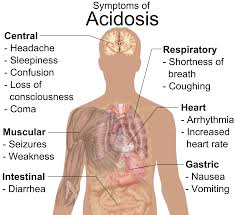Archive for September 2016
Diabetes While Pregnant
A pregnant women’s body is a whirlwind of hormones, glucose, and blood with a baby developing in the eye of the storm. It is also an amazing example of difficult biological engineering.
an amazing example of difficult biological engineering.
Diabetes is a well-known medical problem during pregnancy affecting 3.3% of all live births.
Regardless of what type of diabetes you have, there are steps that you and your doctor can take to have a good and healthy pregnancy.
Gestational Diabetes is a certain type of diabetes that occurs the first time a woman is pregnant.
Gestational diabetes happens when there is a change in the way a woman reacts to the hormone insulin in her body during her pregnancy.
The change in the hormone insulin can cause high blood sugar, which is also known as blood glucose.
18 percent of women during pregnancy suffer from gestational diabetes. It is imperative to diagnose gestational diabetes as soon as possible so you can get the treatment you need and avoid health complications for you and your baby.
Risks factors: Gestational Diabetes
The risk factors that are most likely associated with an increased chance of developing Gestational Diabetes are:
- Having gestational diabetes during your past pregnancies.
- If you are overweight or obese.
- Being older than 25 years old.
- Having a family member that has diabetes (especially within your immediate family).
- If you had a baby weighing more than 9 pounds.
- If you have glucose in your urine.
- Being Hispanic, Asian or African-American.
- Being prediabetic which is also known as impaired glucose tolerance.
When you are at a high risk for gestational diabetes, your doctor will most likely check your blood glucose level on your next prenatal visit.
 The American Diabetes Association suggests screening for all women for Gestational diabetes during their first prenatal visit for women who have risk factors.
The American Diabetes Association suggests screening for all women for Gestational diabetes during their first prenatal visit for women who have risk factors.
If your blood sugar shows a normal reading, your blood sugar levels will be checked again during the 24th to 28th weeks of your pregnancy.
All pregnant women should be screened for Gestational diabetes during that time.
Gestational diabetes can cause women to sometimes deliver a baby weighing more than 9 pounds, which will increase the need for a cesarean section.
Hypertension and preeclampsia often occur more commonly in women with gestational diabetes.
On the other hand, managing and treating your gestational diabetes can have an impact on reducing the likelihood of having these complications.
Treating Gestational Diabetes
Usually, gestational diabetes is treated and maintained through monitoring your glucose on a daily basis and by changing your diet and taking blood control supplements to help manage your blood glucose levels and keep it within a normal range.
Fructose Metabolism
Sugar and Spice, Not so Nice – The Valley Patriot
The Valley PatriotSugar and Spice, Not so NiceThe Valley Patriot –
As Def Leppard once said back in the 1980s, Pour Some Sugar on Me.
But that’s about all I would do with sugar now, because I refuse to eat it.
The average American consumes approximately 152 pounds of sugar a year, roughly 22 teaspoonfuls a day (which is about 355 calories).
Did you know according to the American Heart Association, the recommended amount of sugar is between six and nine teaspoons of sugar a day? When trying to avoid added sugars, watch for ingredients like raw sugar, high-fructose corn syrup, sucrose, and molasses. Added sugars are the worst ingredient in our diet, it has no nutritional value and can have harmful effects on your metabolism and of course can contribute to weight gain and other diseases.
teaspoons of sugar a day? When trying to avoid added sugars, watch for ingredients like raw sugar, high-fructose corn syrup, sucrose, and molasses. Added sugars are the worst ingredient in our diet, it has no nutritional value and can have harmful effects on your metabolism and of course can contribute to weight gain and other diseases.
Sugar is one of the leading contributors to obesity and people that consume more sugar are more likely to be overweight or obese. For a lot of people (me included) sugar and junk foods can become an addiction just like abusing drugs or alcohol. The more cookies, candy and donuts I ate, the more I wanted…, it was my happy place or so I thought. Sugar releases dopamine, the feel good chemical in the brain and there have been studies that suggest dopamine plays a role in impulse control and addiction. So when I’m on a diet and I hear someone say you can have anything you want “in moderation”, I know it just doesn’t work for people like me who are addicted to sweets because the only thing that I know will work is complete abstinence.
Right now there is an epidemic in America known as type 2 diabetes. It currently has afflicted about 27 million people, and another 86 million people have been diagnosed with pre diabetes. I was diagnosed with pre diabetes back in January 2015, I was very unhealthy and eating the wrong types of foods. I was addicted to sugary sport and energy drinks and getting little to no exercise. They say there is no cure for type 2 diabetes but I was able to reverse the diagnosed pre diabetes and I was taken off my medication by staying away from sweets and sugary drinks, following a program consisting of a protein based, nutrient dense diet with moderate exercise.

Fructose powers a vicious circle — ScienceDaily
‘… But there’s a downside: the liver converts fructose…
Fructose powers a vicious circle — ScienceDaily’… But there’s a downside: the liver converts fructose very efficiently into fat. People who consume too much high-fructose food can in time become overweight and develop high blood pressure, dyslipidaemia with fatty liver and insulin resistance — symptoms that doctors group together under the name metabolic syndrome.Unchecked  growth of the heart muscleA new paper by Krek and his team member Peter Mirtschink describes a further, more troubling side effect of fructose. The researchers have discovered a previously unknown molecular mechanism that points to fructose as a key driver of uncontrolled growth of the heart muscle, a condition that can lead to fatal heart failure. Their study was recently published in Nature.
growth of the heart muscleA new paper by Krek and his team member Peter Mirtschink describes a further, more troubling side effect of fructose. The researchers have discovered a previously unknown molecular mechanism that points to fructose as a key driver of uncontrolled growth of the heart muscle, a condition that can lead to fatal heart failure. Their study was recently published in Nature.
Fructose is a major component of dietary sugar and its overconsumption exacerbates key pathological features of metabolic syndrome. The central fructose-metabolising enzyme is ketohexokinase (KHK), which exists in two isoforms: KHK-A and KHK-C, generated through mutually exclusive alternative splicing of KHK pre-mRNAs. KHK-C displays superior affinity for fructose compared with KHK-A and is produced primarily in the liver, thus restricting fructose metabolism almost exclusively to this organ. Here we show that myocardial hypoxia actuates fructose metabolism in human and mouse models of pathological cardiac hypertrophy through hypoxia-inducible factor 1α (HIF1α) activation of SF3B1 and SF3B1-mediated splice switching of KHK-A to KHK-C. Heart-specific depletion of SF3B1 or genetic ablation of Khk, but not Khk-A alone, in mice, suppresses pathological stress-induced fructose metabolism, growth and contractile dysfunction, thus defining signalling components and molecular underpinnings of a fructose metabolism regulatory system crucial for pathological growth….’http://www.nature.com/nature/journal/vaop/ncurrent/full/nature14508.html
Metabolic Acidosis Symptoms
Generally defined, metabolic acidosis is a condition that involves bodily fluids containing too much acid. Furthermore, this is a condition that occurs whenever too much acid is produced, as well as whenever the kidneys fail to remove a sufficient amount of acid from the body itself.
Many different types of metabolic acidosis exist, which include the following:
- Diabetic acidosis. Also commonly referred to as either ketoacidosis and DKA, this condition occurs whenever ketone bodies are built up during type 1 diabetes that is uncontrolled.
- Hyperchloremic acidosis. This can result from a large amount of sodium bicarbonate being lost, which is something that can happen with a condition such as severe diarrhea.
- Lactic acidosis. This is typically a buildup of lactic acid in the body and can be caused by a number of different issues, including cancer, alcohol consumption, liver failure, medications, low blood sugar levels, seizures, and lack of oxygen.
Metabolic acidosis can also be caused by other different issues, including the following:
- Kidney disease
- Severe dehydration
- Methanol, aspirin, or ethylene glycol poisoning
In most cases, metabolic acidosis symptoms can be caused by the underlying conditions or diseases that are causing the issue to begin with.
Generally, this can cause rapid breathing, lethargy, and confusion to occur. However, if the issue is more severe, it can lead to either shock or death. There are also cases where metabolic acidosis can be mild and/or chronic in nature.
There are many great ways to help confirm whether or not metabolic acidosis is actually present, such as an arterial blood gas analysis or a serum electrolytes test.
These types of examinations will also determine whether the specific acidosis case is either metabolic or respiratory. However, there may be instances where other types of examinations may be needed.
Treatment
Treatment is generally aimed at the main underlying condition. There are some instances in which a sodium bicarbonate supplement or even baking soda itself may be administered to help improve the acidity of blood in the body.
